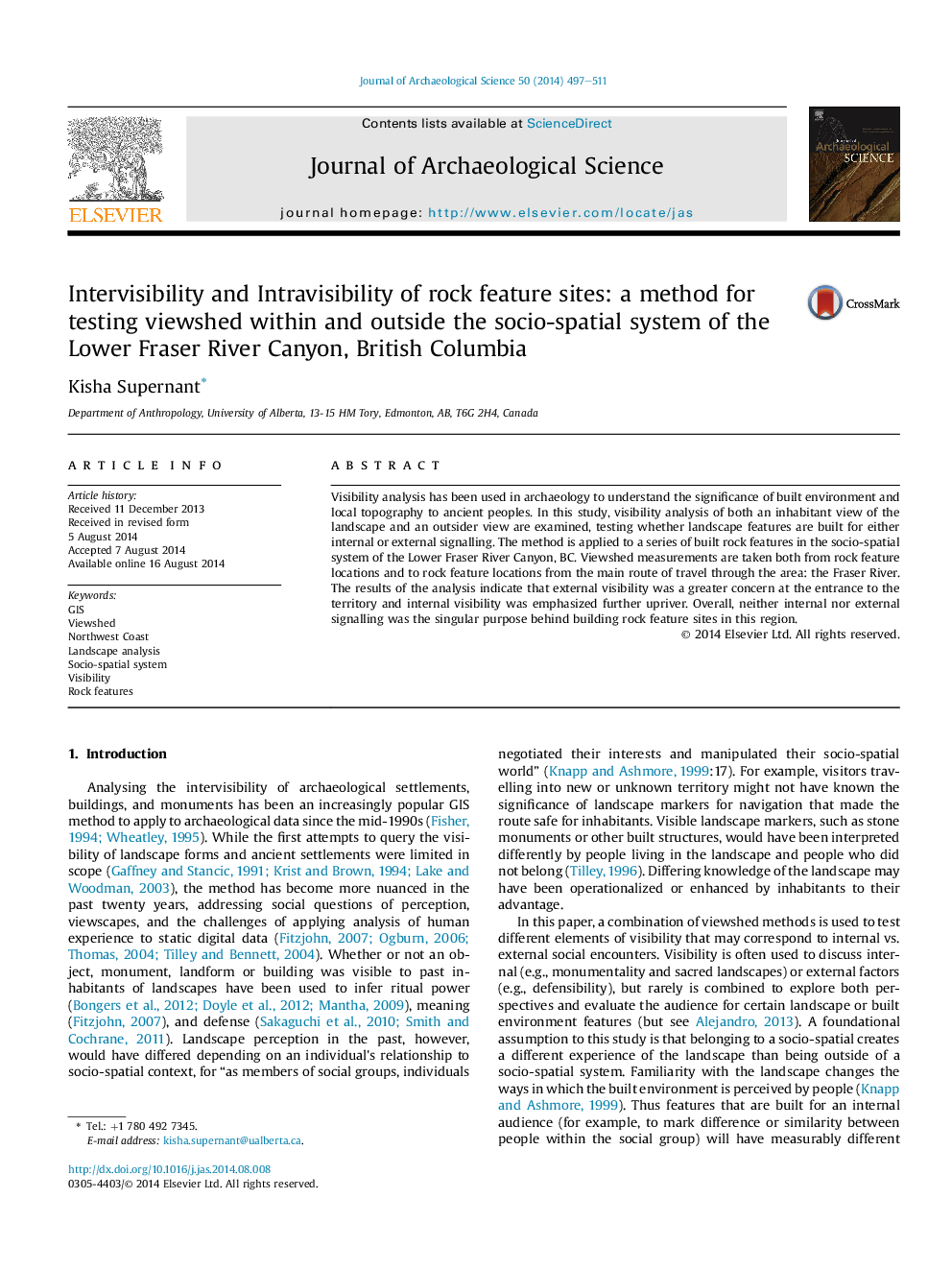| Article ID | Journal | Published Year | Pages | File Type |
|---|---|---|---|---|
| 7443086 | Journal of Archaeological Science | 2014 | 15 Pages |
Abstract
Visibility analysis has been used in archaeology to understand the significance of built environment and local topography to ancient peoples. In this study, visibility analysis of both an inhabitant view of the landscape and an outsider view are examined, testing whether landscape features are built for either internal or external signalling. The method is applied to a series of built rock features in the socio-spatial system of the Lower Fraser River Canyon, BC. Viewshed measurements are taken both from rock feature locations and to rock feature locations from the main route of travel through the area: the Fraser River. The results of the analysis indicate that external visibility was a greater concern at the entrance to the territory and internal visibility was emphasized further upriver. Overall, neither internal nor external signalling was the singular purpose behind building rock feature sites in this region.
Related Topics
Physical Sciences and Engineering
Materials Science
Materials Science (General)
Authors
Kisha Supernant,
